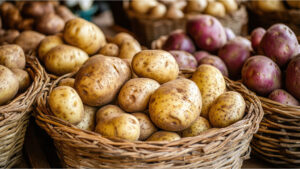Farm-to-table has become an increasingly popular movement globally. Consumers are choosing fresh, local produce. They’re choosing to support sustainability. Farmers are looking beyond the old models of selling produce through centralised marketing organisations.
As Australian farmers embrace the trend, let’s dive into the nitty-gritty of the farm-to-table movement in Australia. How are farmers selling direct to consumers? How has it changed how they produce food? And how has the movement changed the way consumers shop for food?
More than a fad
Farm-to-table in Australia is more than just a fleeting fad. It is a shift in the way food is produced and consumed. Consumers want to know the provenance of their fruits and vegetables. Some of this can be traced back to chefs like Serge Dansereau who started adding provenance to their menus. Spring lamb was no longer spring lamb, but Milly Hill lamb. Scallops became Coffin Bay Scallops. With time, consumers started to recognise these names as marks of quality.
This coincided with the establishment of the farmers’ market. Niche producers now had restaurants prepared to pay more for the extra care taken to grow produce. And they had markets where they could sell direct to consumers, building a rapport between producer and consumer.
Farmers’ markets are great for farmers whose properties are a short drive from their farms. For farmers who cannot sell directly through these markets, the internet has revolutionised the sales model, allowing farmers to sell their food directly to consumers all over the country. One of the first was Farmhouse Direct, created by Australia Post.
Trialled in 2012, Farmhouse Direct rolled out nationally shortly afterwards. In essence, it was a virtual farmers market. Producers from across Australia could list their produce. Farmhouse Direct processed the order and payment. Order went to the farmers for fulfilment. Produce was sent direct from the farm to the consumer – delivered by Australia Post, naturally.
We have used the past tense because Farmhouse Direct ceased operation. Ironically, the reason Australia Post has given for closing it is the success of online selling. Fewer consumers were buying through Farmhouse Direct. They started going direct to the farm.
Changes to food production
The farm-to-table movement has paved the way for a new way of thinking about food production. Initially, farmers saw it as a means to be recognised, and rewarded, for the quality of their produce. Then, something else happened. Growers started adding value to their produce – and adding dollars to their bottom line – by bringing processing in-house. Instead of selling their harvest, farmers would turn it into consumer products.
Wheat farmers started milling their own brand of superior flours. Olive growers made oil, then beauty products and condiments from their olives.
Today, Australian farmers are roasting, grinding, filtering, blending, drying and weaving a host of products that they sell direct to consumer via websites and social media.
Sustainable farming
There have other changes coinciding with the rise of direct sales from farm to consumer. Concern about chemicals in the food chain has heightened awareness of eco-farming practices and sustainable food production. Consumers feel more confident that a product bought from a farmer is less likely to have seen the chemical and overprocessing common in commercial food production. More farmers are adopting organic practices. More than half of the world’s farmland dedicated to certified organic production is in Australia. Organic farmgate sales have risen 35% in 2 years.
The farm-to-table movement has also stimulated the culinary industry. The trend started by Serge Dansereau has grown to the point today where chefs now focus on creating menus of food produced locally and sustainably.
Local farmers’ markets are being augmented by businesses like Byron Bay’s Locavore, a brick-and-mortar food store for local produce. Another, Food Orbit, has been created to connect restaurateurs with farmers. The business helps chefs find and purchase from responsible farmers and producers.
One of the essential aspects of the farm-to-table movement is branding, especially for small-scale farmers. Being able to market their products is the key to success, and branding has become critical to the movement’s success. Farmers who understand branding can sell their products better than those who do not. Social media has become an indispensable tool in branding. Farmers can showcase their products, share stories from their farms, and engage with their customers in a personal way.
There are many stories of Australia’s shrinking farming community. According to Food Orbit, every month nearly 300 farmers leave farming for good. The number of Australian farms has decreased 11% in 5 years.
Against this background, farm-to-table is a brilliant step forward for both farmers and consumers.




